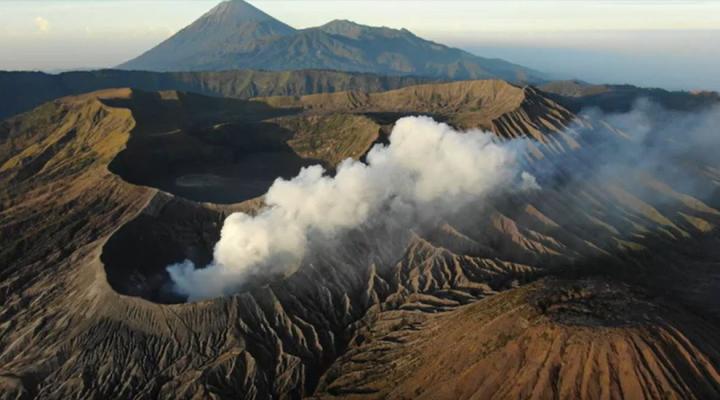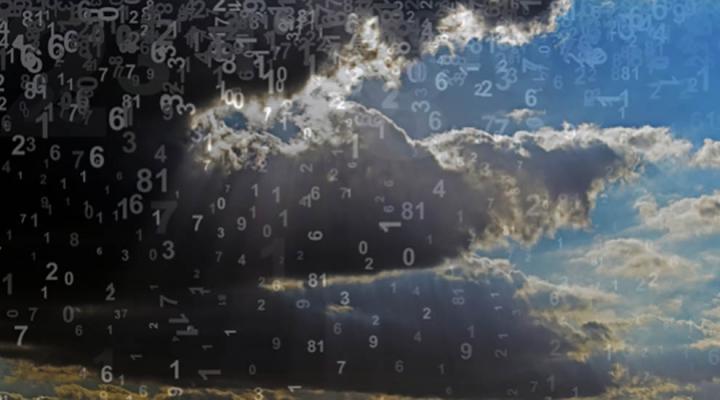By Erin Philipson
The Braudy Foundation – founded by Bob Braudy ’65, M.Eng. ’66, and his wife, Judi – has committed to funding a second five-year phase of a collaboration between Cornell’s Department of Earth and Atmospheric Sciences (EAS) and Northern Arizona University (NAU) that will use drones to chase dust storms and learn about their effects on the atmosphere.
The research will be led by Toby Ault, associate professor in EAS in the College of Agriculture and Life Sciences, and Nick McKay, associate professor at NAU, who made important breakthroughs in the first phase of the Braudy-funded project. Over the past four years, the Cornell-NAU team discovered new dimensions of dust, drought, land use, and climate change on the southern Colorado Plateau. The high elevation of the region, which encompasses portions of Arizona, Colorado, New Mexico and Utah, makes the area particularly vulnerable to climate change and has been the focus of many climate scientists.
At NAU, McKay and Steph Arcusa, an early-career scientist funded by the project, developed new paleoclimate lake records that defy standard models of how the atmosphere picks up dust from the land surface and deposits it downstream. Ault and Carlos Carrillo, a Cornell postdoctoral associate funded by the project, introduced new methodologies for simulating the large-scale effects of drought and dust in the region using numerical models of the global circulation.
Phase I of the project revealed the counterintuitive result that dusty periods in the U.S. Southwest did not correlate with pre-industrial periods of drought.
“The NAU team started finding these really clear dust deposits,” Ault said, “and at first I thought, ‘exactly, megadrought,’ but then it turned out that, no, we just don’t really understand what’s controlling dust emissions in that region during pre-industrial times.”
Since those pre-industrial times, however, dust has been heavily influenced by the presence of disruptive human activity and land use such as cattle grazing, which, the team hypothesizes, makes dust emissions more sensitive to droughts now than it was a few centuries ago.
Unanswered questions from the first phase inspired the highly ambitious research goals for the newly-funded second phase - tracking the flow of dust from the land surface into the atmosphere using low-cost sensors mounted on drones and weather balloons. The drones will aim to move with dust storms in the atmosphere and physically collect samples for research. The Cornell-NAU team and the Braudys began developing the idea for Phase II in September of 2019.
There is a lack of knowledge in the scientific community about what dust does once it’s moving along in the atmosphere. The Braudys and the Cornell-NAU team found this problem particularly interesting and set out to develop technology to collect samples of dust and data while in the atmosphere.
Phase II will establish a new undergraduate internship program for rising juniors and seniors at Cornell. Students will join a research and innovation team tasked with developing new technologies to observe dust in the atmosphere as it is mobilized and deposited. The open-ended aspect of this research experience fits well into the project team model that Cornell Engineering is known for – giving students real-world experience with tools, modeling and data in a team-based setting.
Bob and Judi Braudy have a long-standing affinity with upstate New York and Cornell Engineering, which has led to several gifts and collaborations over the years, focused on providing students with hands-on experience. In 2009, the Braudys endowed an ethics workshop that brings together faculty and students from Cornell Engineering, the SC Johnson College of Business and the Law School.
Diversity and inclusion will be paramount to Phase II of the project, and members of underrepresented communities in STEM will be encouraged to apply from across Cornell.
“One of the big problems we see,” said Ault, “is that institutional biases can reinforce existing inequalities, which creates a divide between the average and the outstanding college graduate. And, admittedly, I think all of us have inadvertently perpetuated this problem in one way or another, in part because we haven’t been proactive enough in our efforts to combat it.”
Yet Ault also believes that Cornell’s highly diverse engineering program and its mandate to provide an education to “any person… any study” makes it uniquely positioned to disrupt the narrative of institutional bias.
The Braudys, ‘true collaborators’
Bob Braudy graduated from the Cornell School of Applied and Engineering Physics then went on to complete his M.Eng. in Cornell’s Sibley School of Mechanical and Aerospace Engineering. Judi Braudy attended Binghamton University, a short hour drive from the Cornell campus.
Ault describes the Braudys as true collaborators in the project – contributing ideas and influence over the direction of the research.
“I think of them both as collaborators,” says Ault. “They contribute ideas and content to the project, and often they will find a unique piece of information that forces us to scratch our heads and dig deeper. We’ve all really enjoyed and appreciated that aspect of the research.”
Bob Braudy has extensive experience with drone technology from his long-term appointment on the Coconino County Sheriff’s Search and Rescue team in Flagstaff, Arizona. The team is one of the few across the country to be certified by the Mountain Rescue Association and conducts about 140 missions per year. Search and rescue teams use drones to assess emergency situations and extent of injuries in locations that are dangerous for humans to access.




